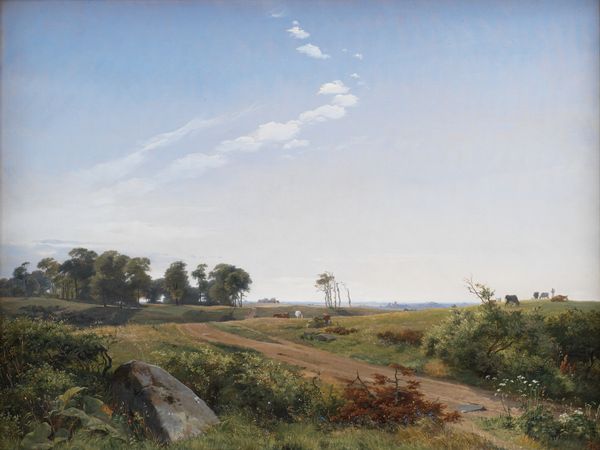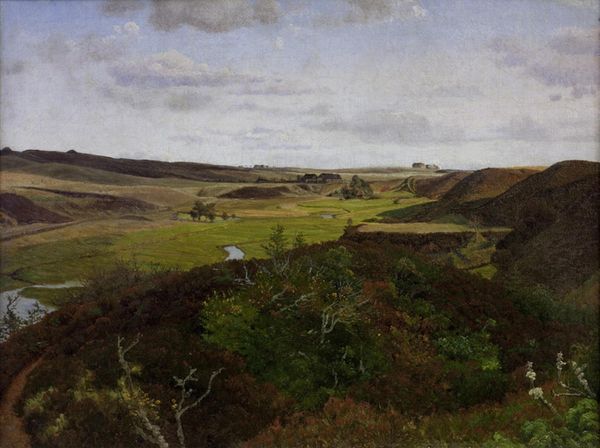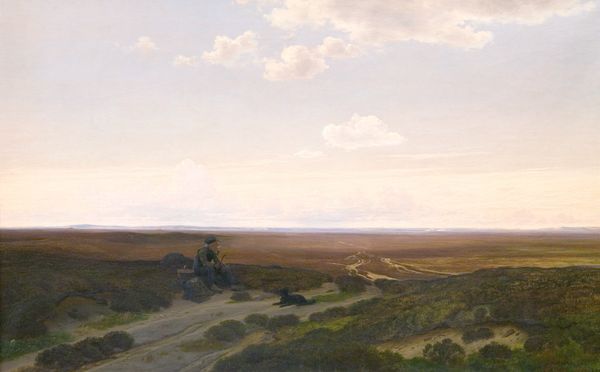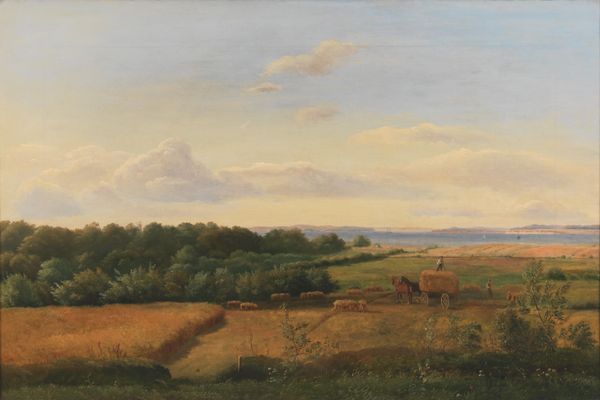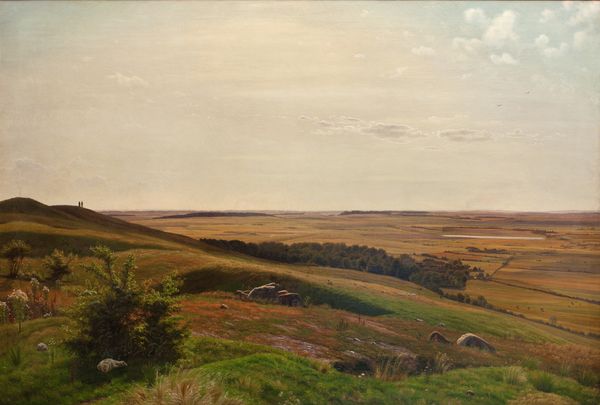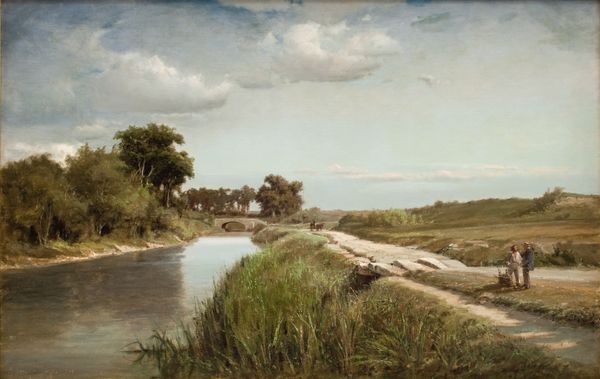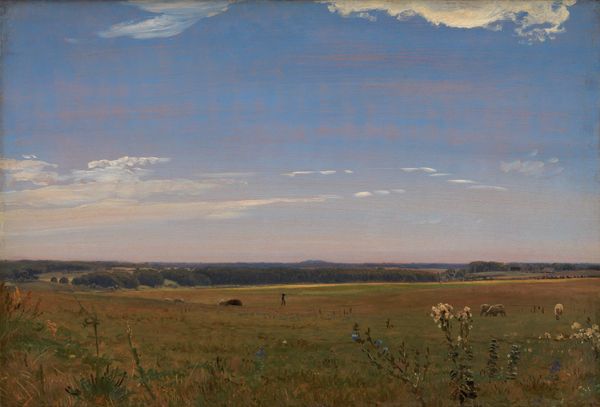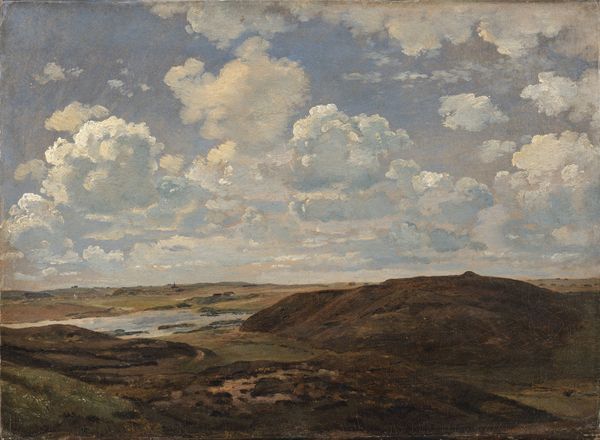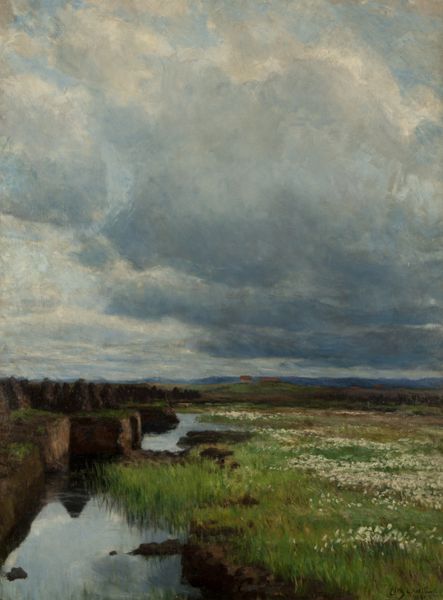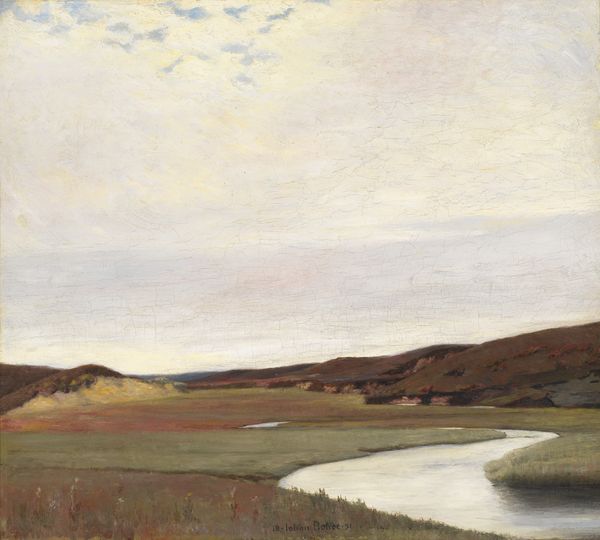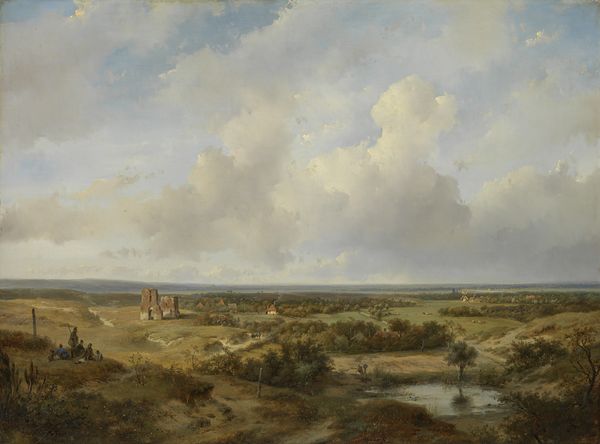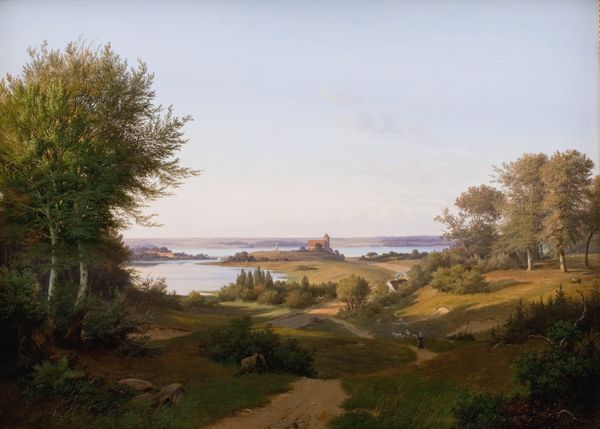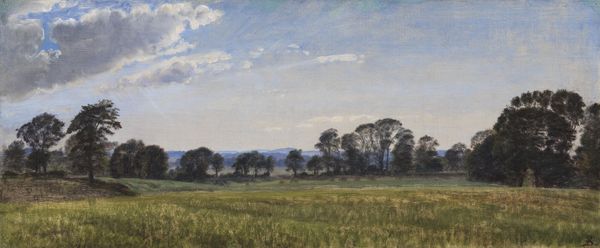
painting, plein-air, oil-paint
#
painting
#
plein-air
#
oil-paint
#
landscape
#
romanticism
#
seascape
#
painting painterly
#
academic-art
#
realism
Dimensions: 53 cm (height) x 81.5 cm (width) (Netto), 70.3 cm (height) x 98.9 cm (width) x 6.5 cm (depth) (Brutto)
Editor: This is P.C. Skovgaard's "View of the North Coast of Zealand at Dronningmølle" painted in 1844. It’s an oil painting showing a serene landscape. It evokes a feeling of calm and pastoral beauty, but also a strange loneliness with those small figures standing by the dunes. How would you interpret this work? Curator: Considering the period and Skovgaard’s dedication to plein-air painting, it’s vital to examine the role Danish nationalism played in the arts. This image aligns perfectly with the period’s emphasis on idyllic landscapes, promoting a unified and proud vision of Denmark. Notice the careful composition and the way the stream leads our eye towards the sea. Editor: Yes, the composition is really deliberate. And plein-air suggests he wanted to capture a realistic view. So, it's almost like propaganda, projecting a specific image of the Danish countryside? Curator: Indeed, and more than "propaganda," let’s say it participated in a cultural project. How the state funded artistic institutions like the Academy which defined standards of 'good art,' shaping public taste and artistic careers. These landscapes reinforced ideas about national identity, tied to the land, and a shared cultural heritage. Consider who this image was for, and what values it promoted? Editor: It gives me a lot to think about. I had assumed that the painting was purely about capturing natural beauty, not necessarily related to nation-building through art. Curator: And that’s where understanding the socio-political landscape helps. Romanticism doesn't exist in a vacuum; it's always responding to, or reinforcing, certain power dynamics. Editor: So even an apparently simple landscape painting like this is actively participating in shaping how people think about their country and its identity? Curator: Precisely. Understanding this historical and institutional context unlocks a deeper appreciation of the artist's choices and the painting's cultural significance. It also makes you aware of the possible exclusion of diverse voices. Editor: I learned something new about how art can be about cultural representation. Curator: As did I! Thinking more about artistic production in periphery regions during national movements may inspire me to look into the reception of local academic landscape tradition in Galicia.
Comments
No comments
Be the first to comment and join the conversation on the ultimate creative platform.
